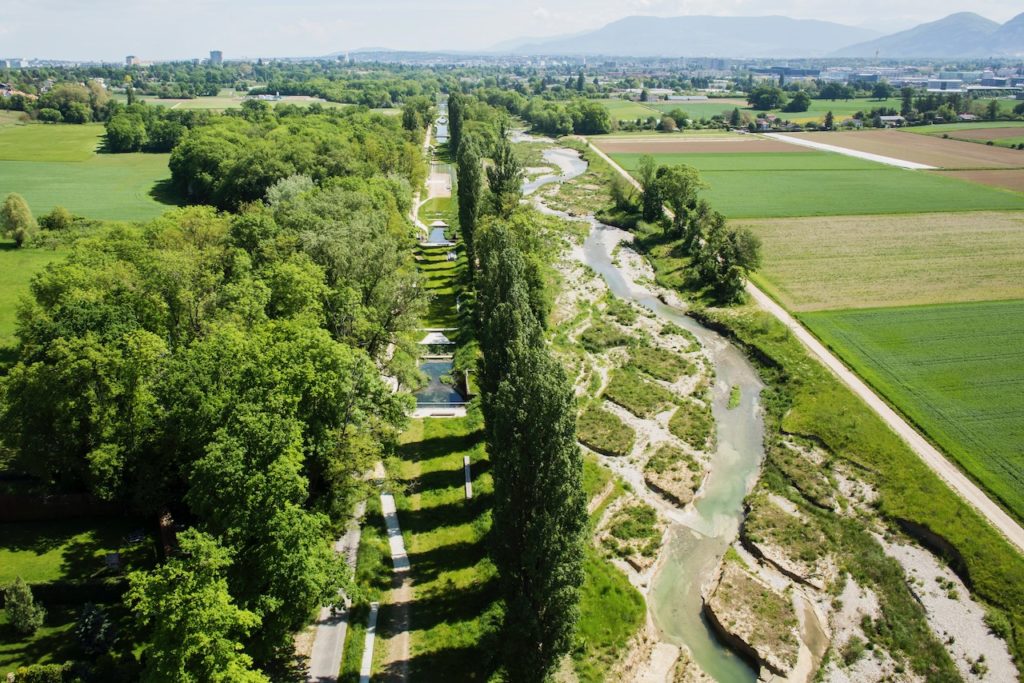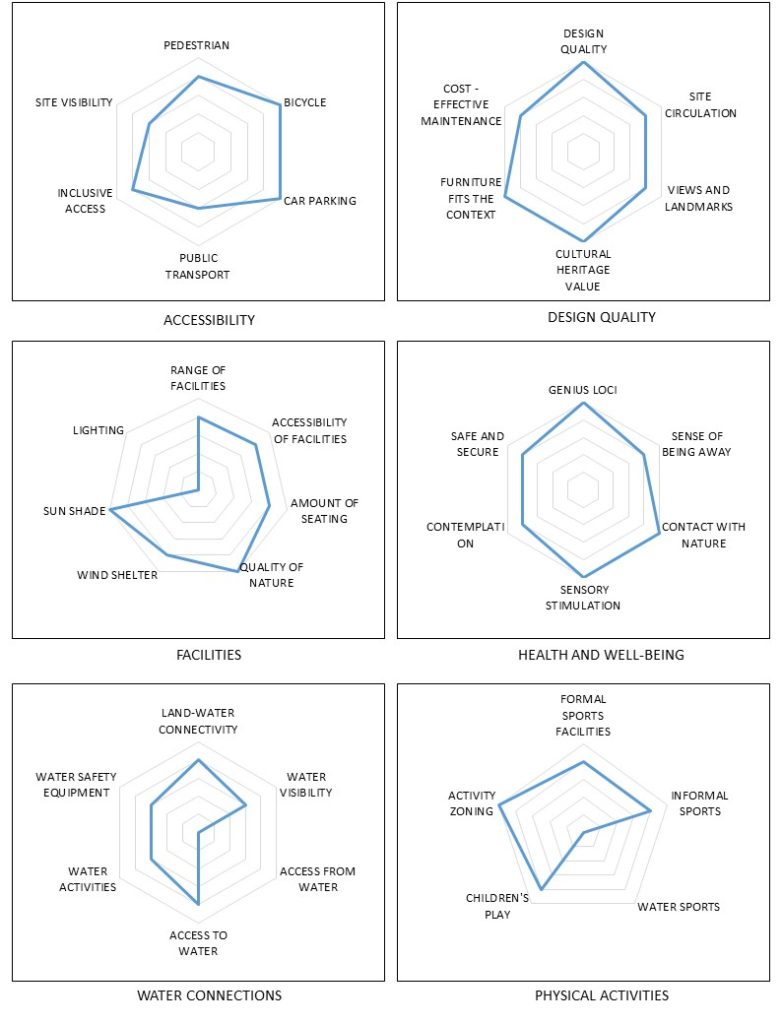
Architect
Atelier Descombes Rampini and Superpositions
Type of Area
Medium-sized river with natural banks
Land/water interaction
Artificial island
Flood plains
Embankment
Built Environment Types
Low built
High green
Scale of Impact
City
Intervention Scale (Spatial)
Large site
Project Types
Natural waterfront development
Public green space regeneration
Green infrastructure
Urban/ Rural
Urban fringe
Visibility and Openness
Visible from vantage points
Renaturalising the River
The Aire River garden is a river renaturalisation project that comprises different interventions implemented in four phases on a five kilometre length covering almost fifty hectares. It is designed in stages by Atelier Descombes Rampini with Superpositions as a creative collaboration between landscape architects, civil engineers, and biologists with the first three stages completed in 2015.
From the late 19th century, the Aire was gradually canalised as part of the Swiss large-scale drainage projects to turn former wetland into large-scale agriculture. This canalised river became an iconic element in the local landscape but in 2001, the canton of Geneva launched a design competition to restore the river to its original shape. The aim was to remove the canal construction, while improving the water quality with more effective flood management and providing public access. The landscape architects answered with a challenging response that questioned the established norms of ecological restoration.
Renaturalisation projects often simulate an image of nature, which is not the case here, as the river never existed without any human intervention and has always been a canal. The organisation of the design connects the new river space with a linear series of gardens in the floor of the former canal. The landscape architects did not design a fixed riverbed and instead proposed a diamond-shape pattern for the new river bed whose form addressing the interplay between the river flow and the prepared terrain. This new riverbed does not replace the existing canal but flows alongside of it, being fed by rainwater. Channels were excavated to maintain control of the river profile in a near-natural manner and pattern. After opening up the new river space, the river flow has moved sediment downstream and over a one-year period the geometrical matrix substantially changed into a new pattern of multiple channels which continue to drift downwards. The canal serves as a reference object for visitors to experience “before and after” and provokes questions about the making of this technical river landscape. In the sense of a pedagogical landscape, it raises awareness about temporality and process (Rosenberg 2019).
An earlier unrealised regional strategic plan connected sites of natural and cultural value and each contributed to a sense of place and identity, a typology recalled by the whole river garden. The first phase started with a master plan and a pilot project along a short section of the river to test the afore-mentioned principles as well as balancing the needs of stakeholders. In the second phase functional hydraulic work was carried out which led into the third phase that included the creation of the river and separating it from the canal. The old canal bed was then transformed into a chain of gardens along a continuous promenade, with shelters providing shade and picnicking places, its newly designed bed form deriving from the vernacular language of technical elements, such as weirs, concrete stairs, tree alleys and angular banks (Rosenberg 2019).
Juxtaposing the river and canal after its restoration respects the historical layers rather than erasing all traces of former use. The Aire River garden has taken a purely ecological programme and developed it into a significant regional public space with a complex landscape. Restoration was less about reaching a finished state but more about creating an open process that reconsidered images of nature, that we take for granted, into an open artwork.
Perception and Meaning
Knowledgeability
Accessibility
Genius loci
Place identity
Health and Wellbeing
Place affordance
Better environmental perception
Increased physical activities
Sense of being away
Interaction with Water
Visual
Tactile – touching

Website of the project:
http://www.theriverchronicle.ch/assets/user/publications/TheRiverChronicle_WEB.pdf [French]
http://www.arquitectes.cat/iframes/paisatge/fitxa/9875
Google map reference
Good access to the project is provided for most users by most means of transport. The extended area of the project with its comprehensive design approach offers an overall high and original design quality, which also considers the facilities.
As this project is on the urban fringe it requires some lighting to feel safe. In the same way, the design quality also reflects health and well-being needs. The water connectivity is therefore covered, though there is no need for access from the water.
By retaining the former canal bed there is quite a lot of space for physical activity and children’s play, but is does not offer space for water sports due to the shallow depth. This project has a unique design which is perfect for creating contact with water in a quite unusual way but this focus limits other important aspects.
